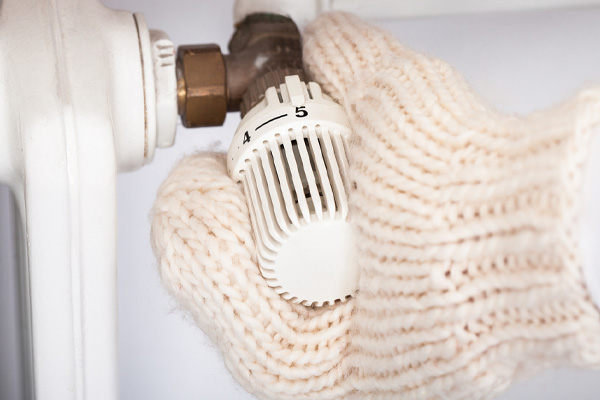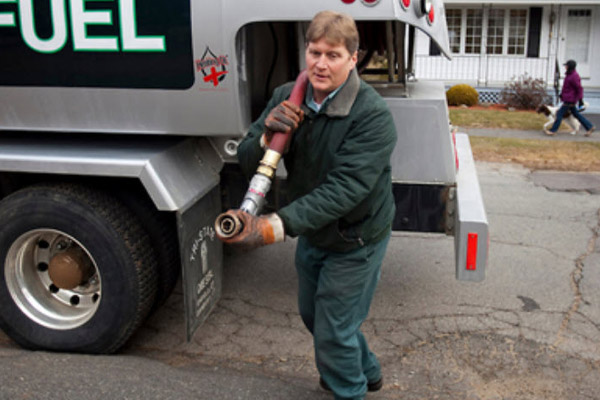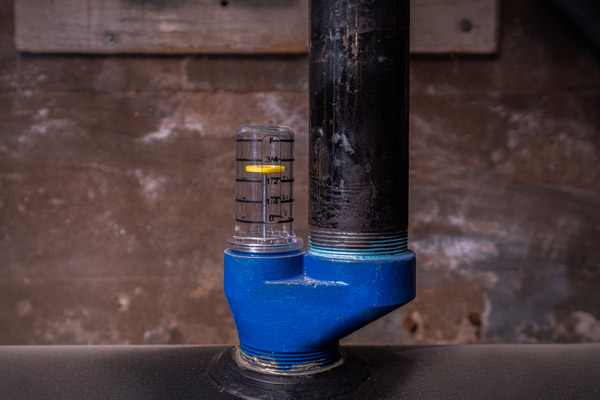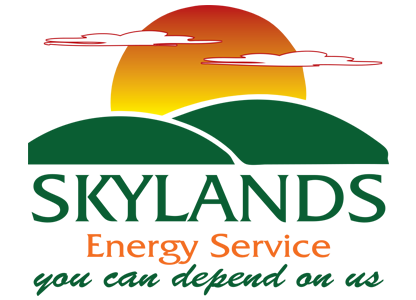
Millions of homeowners utilize heating oil to provide warmth in their homes during winter. If you are one of these homeowners, checking on your oil’s status is probably one of the biggest troubles of the season. Heating oil is a crucial aspect of your home, but many homeowners still fail in this essential system’s upkeep.
The winter season usually means family outings, skiing trips, and other snow-related activities. Checking the heating oil tanks and scheduling a heating fuel delivery might get lost in all these day-to-day activities. However, this time of the year is also the most crucial period to have a full oil tank. Even the most responsible person can run out of fuel during the coldest days of the year when it is needed the most.
A potential cause of an empty oil tank is falling to monitor your oil levels year-round. You might also lack the funds to purchase your next refill. Other reasons could be a tank system leak or your fuel getting stolen.
Regardless of the cause, it can be frustrating when you run out of fuel oil. It can have a significant effect on your household’s well-being and daily function. Preventing from running out of heating fuel doesn’t need to be a nightmare. When you understand the risks of running out of fuel, you can ensure that you have a full tank when you follow a few simple steps.
Why You Should Avoid Running Out of Heating Oil
Table of Contents
- 1 Why You Should Avoid Running Out of Heating Oil
- 2 Ways to Prevent Running Out of Heating Oil
- 3 Call Skylands Energy Service For Reliable Oil Deliveries
It might not seem like it’s a big deal that you don’t have any preventive measures in place, especially if you haven’t experienced having an empty oil tank before. However, this problem brings more harm than you might think, and even the most careful homeowners might forget to order their fuel on time.
Some crucial reasons make buying oil on time necessary. Aside from coming home to a cold home without hot water, here are some of the issues that can happen when you don’t take preventative measures to keep your heating oil from running out.
Added Oil Delivery Expenses

The most common time that homeowners run out of heating oil is during the middle or end of winter. The bad news is that this is also when heating oil prices are at their peak. You end up paying the highest heating oil prices of the season when you run out between October and March. As a result, you might have to shell out hundreds of extra dollars in the process.
You also have to spend more on an emergency delivery than a regular fill-up. It would cost you significantly less to have small fill-ups throughout the year than an emergency delivery.
Oil Tank Sludge Buildup
The bottom of your heating oil tanks typically has debris and sludge. However, they don’t usually cause damage to your system unless it becomes empty.
Low oil levels mean that the sludge gets sucked with the remaining oil into the supply line. This can cause a clog. If not, it will go to a filter and clog it partially or fully. Blocked fuel lines or filters cause inefficiency or system shutdown that needs to be checked by an expert.
Manual System Reset
Resetting your heating oil system after running out can be as easy as pressing a button at times. However, you need to reset the pilot light if it goes out.
Per the law, a professional should conduct the pilot light reset. The process requires bleeding the oil line and changing all clogged filters. You will need to spend much more than if you had an oil delivery before running out.
Ways to Prevent Running Out of Heating Oil
Many risks come with running out of heating oil. Therefore, don’t wait when it comes to ensuring your home’s protection. Handle your home’s heating needs and take the preventative steps needed to keep your heating tank full throughout the year.
The general rule in the industry is that your oil tank should be at least 25 to 30 percent full at all times. However, you don’t need to walk to your tank repeatedly so that you can manually check the levels. The following services and technologies will help you take preventative measures without the stress and added time of manual monitoring:
Automatic Heating Oil Delivery

Automatic oil delivery services mean you won’t have to worry about running out of oil again. The best part of this service is that you don’t even have to lift a finger. You don’t need to constantly check your tank and calculate when to book your next delivery. An automatic delivery program means your oil company will take care of everything so you can sit back and relax.
Signing up for automatic fuel delivery means the oil supplier will track your oil consumption using non-invasive technology. It will measure your home’s estimated heating oil use. The company will use information such as family size, house size, along with the calculated heating degree days. The HDD is the measurement of the amount of energy needed to heat your home per the exterior temperature.
The HDD is calculated using the fuel tank size, the square footage of your home, and the previous data on your heating requirements. This information helps acquire highly accurate results as to estimate when your tank will be at 30% full. Your oil supplier will then contact you directly to schedule a delivery.
Pros of Automatic Delivery
The most popular delivery method for many heating oil suppliers is automatic delivery. It also has a high success rate in ensuring your fuel tank never runs empty.
- You save the most money with an automatic delivery compared to other preventive options. Most heating oil companies reward customers with discounted oil prices when they sign up for this service. These discounts can add up to a significant amount.
- The system utilizes your heating history and delivers to your home per your unique home requirements. Hence, you won’t be sold unwanted or unneeded oil.
- Non-intrusive calculation technology ensures that you don’t have to worry about invasive tank monitoring software.
Cons of Automatic Fuel Oil Delivery
- The system doesn’t recognize unexpected heat increases. For example, you have relatives staying with you during the holidays, increasing your hot water usage. You might have also gone on vacation, and your fuel consumption is less than usual. You need to call your oil supplier so they can adjust your delivery schedule when these situations arise.
- With automatic oil delivery, you will need to commit to a single oil provider for a certain period to get the most accurate results. This means you can’t shop around for different oil rates all year long.
Tank Monitoring Apps & Smart Meters
Smart technology is present in nearly all industries. Every possible part of a home isn’t lacking with technologically advanced options, such as smart thermostats, garbage bins, cookware, and security systems. This technology has also introduced the smart oil tank meters, creating a stir in the heating oil industry.
Smart software has allowed homeowners to monitor their home’s consumption, oil levels, and heating costs from virtually anywhere. There is a sensor attached to your oil tank, and it is equipped with a tracking method that sends data to your phone or computer.

Pros of Smart Oil Tank Meters
- Many systems have built-in alarms that alert you in case of potential oil theft.
- Most smart systems notify you when you have low oil levels, so you have time to contact your oil provider.
Cons of Smart Meters
- Smart meters are on the costlier side of the available oil tracking alternatives. A smart tank monitoring system is priced at about $100 or more.
- There have been error reports from smart monitoring software, which have gained media attention. They described rare cases of having up to 50% inaccuracy when it came to electricity monitoring systems. While many smart oil monitoring software users find it accurate, you should also consider these occasional inaccuracies.
- Most smart meters only alert the homeowner and not the supplier when your oil level is low. Hence, you will need to call your oil supplier when this happens so you won’t run out of oil.
Remember that smart meter installation isn’t a do-it-yourself project. It needs to be done by a professional. Skylands Energy Service can install these meters during your yearly heating system tune-up appointment. Make sure to contact us today if you haven’t scheduled an oil heating system maintenance yet.
Local Oil Tank Monitors
Local tank monitoring software is an excellent alternative if you want to check the tank levels from the comfort of your home but don’t have a smartphone or device to connect a smart meter. It works the same as smart meters in that local tank monitors have a transmitter that’s easily attached to your oil tank. This sensor sends a local read-out to a monitor that’s usually plugged into an electrical socket in your home.
Pros of Local Oil Tank Monitors
- Monitors typically have a quick installation process. All you need to do is place the sensor in the tank and plug the monitor in an outlet. If you don’t use a smartphone, you can easily enjoy the advantages of a tank read-out system.
- The system will notify you via the monitor when the oil level gets low. Therefore, you don’t have to guess when to call your oil supplier.
- Local tank monitors have a higher accuracy level than traditional mechanical float gauges. It can even replace the need for dipsticks and gauges.
Cons of Local Heating Oil Tank Monitors
- Some monitors can be placed anywhere in your home. However, many need to be put within a specific distance from the tank, so there is less freedom than automatic delivery services or smart meters. Moreover, some mobile monitors are battery-powered and can be taken anywhere around your home. However, most local tank monitors need to be plugged in an electrical outlet and have no mobility.
- Tank transmitter and monitoring systems can cost you as much as $100, nearly the amount you’ll spend on smart monitoring software.
- The system will send an alert only to you when the tank supply is low. Therefore, you still have to contact your oil provider to schedule an oil delivery.
Oil Tank Alert Systems

An oil tank alert system will notify you of low oil levels without whistles and bells that smart or local monitoring systems have. You also do not need to pay for any extra settings or data. All that is required is to install the gauge on your oil tank. This component will send an alert to a receiver when there is a low oil level. The receiver will flash or beep once the oil level reaches the set amount, so you know when you need to call your oil supplier.
Pros of Oil Tank Alert Systems
- This monitoring solution is ideal for homeowners who are not familiar with smart technology. The receiver does not have a screen or a complex user interface. It is only a simple device that lets you know when you have low oil levels without any extra information.
- Alert systems are an inexpensive option than other tank monitoring software because of their simplicity. A unit can be bought for a pretty cheap price.
- Many receivers are powered by batteries, so you can put them anywhere in your home.
Cons of Fuel Oil Tank Alert Systems
- Alarm systems let you know of low oil levels. However, they won’t tell you crucial data regarding your oil use. Having knowledge of your daily and seasonal trends can tell you exactly where you are wasting money and what can be done to lower your heating bills. However, alert systems do not track this information.
- Like other tank monitoring options, alert systems won’t notify your oil supplier when your tank level is low. You still need to call your oil provider to schedule an oil delivery.
Manually Checking Your Oil Tank Levels

You still need to conduct oil checks now and then to prevent running out of oil, even if you don’t have the budget for an automatic delivery service or a monitoring system. Experts do not encourage you to check your tank manually. However, you can use self-monitoring as a last resort. Assess the gauge and contact your oil supplier when you have low oil levels.
You can check how full your tank is by using a dipstick. Contact your oil provider and schedule a delivery before it reaches one-quarter full. Ensure that oil levels never go below this mark to prevent running out of fuel and causing damage to your tank.
Pros of Manual Oil Monitoring
At the onset, manual monitoring is the most economical alternative. However, you might pay more in the long run, especially if you forget to check your oil supply throughout the year.
Cons of Manual Oil Tank Monitoring
- Even highly responsible homeowners might forget to check their heating oil, especially with the hustle and bustle of life. Manual monitoring depends on you to check your tank’s oil levels frequently, unlike most methods that alert you when you have low oil levels. Failing to do so could lead to the need for an emergency fill-up and expensive repairs.
- The most inconvenient monitoring method is manual monitoring, especially if that tank is outdoors. After all, the last chore you want to do during the coldest days of the year is to stand outside while checking the oil tank level.
What You Should Do If You Run Out Of Oil
Preventative measures can’t help you refill your empty tank once it is already out of oil. It is vital that you take steps to avoid it from happening in the future, but you still need to act right away to restore your home heating.
Here are a few guidelines on what you can do when you completely run out of heating oil:
- Call for an emergency fuel delivery service: This way, you receive the necessary fuel to heat your home less than 24 hours after placing your order.
- Use a substitute for home heating: When you run out of heating oil, you can use diesel fuel or kerosene to power your home heating until the emergency fill-up service arrives. Fill a gasoline-safe container with around 5 to 10 gallons of fuel from your local gas station. Other alternatives include using a space heater or a fireplace as home heating until you receive more fuel.
- Insulate your surroundings: Excess heat should stay in your home while you wait for the oil delivery. To do this, make sure all windows and doors are tightly closed. Insulate with weather stripping when possible to lessen heat loss as well.
Call Skylands Energy Service For Reliable Oil Deliveries
 Skylands Energy Service offers reliable and affordable heating oil delivery services throughout Central New Jersey. We have many delivery plans and financing options available to meet your needs.
Skylands Energy Service offers reliable and affordable heating oil delivery services throughout Central New Jersey. We have many delivery plans and financing options available to meet your needs.
Likewise, our family-owned company has many different types of home comfort services. This includes heating oil delivery, on/off-road diesel delivery, plumbing services, heater repair, heating system maintenance, heater installations, and more. Be sure to give Skylands Energy Service a call today to see what we can do for you. All of our services come with a guarantee to ensure your satisfaction. Call now!
Contact us now at (908) 707-1776 to find out more!

